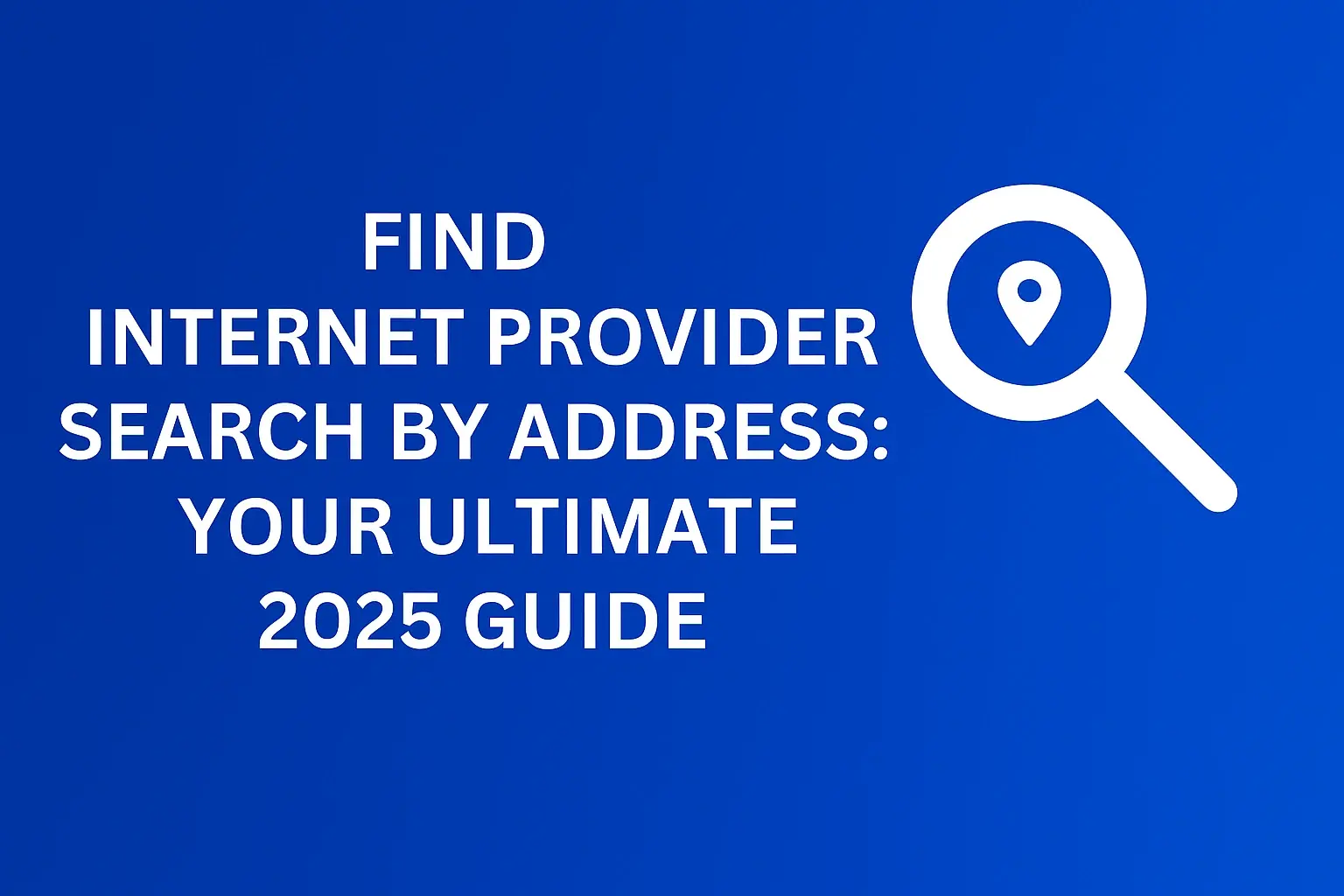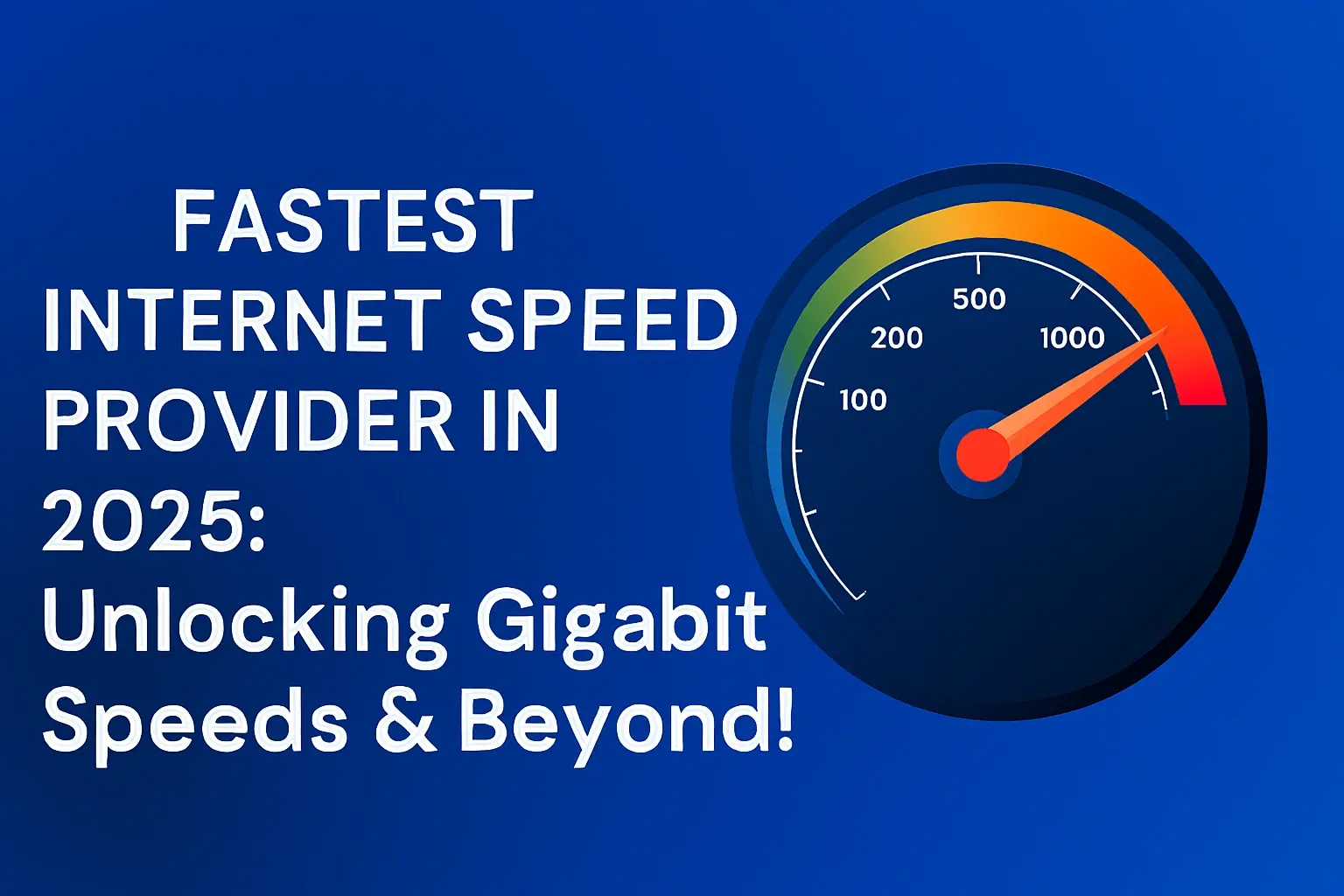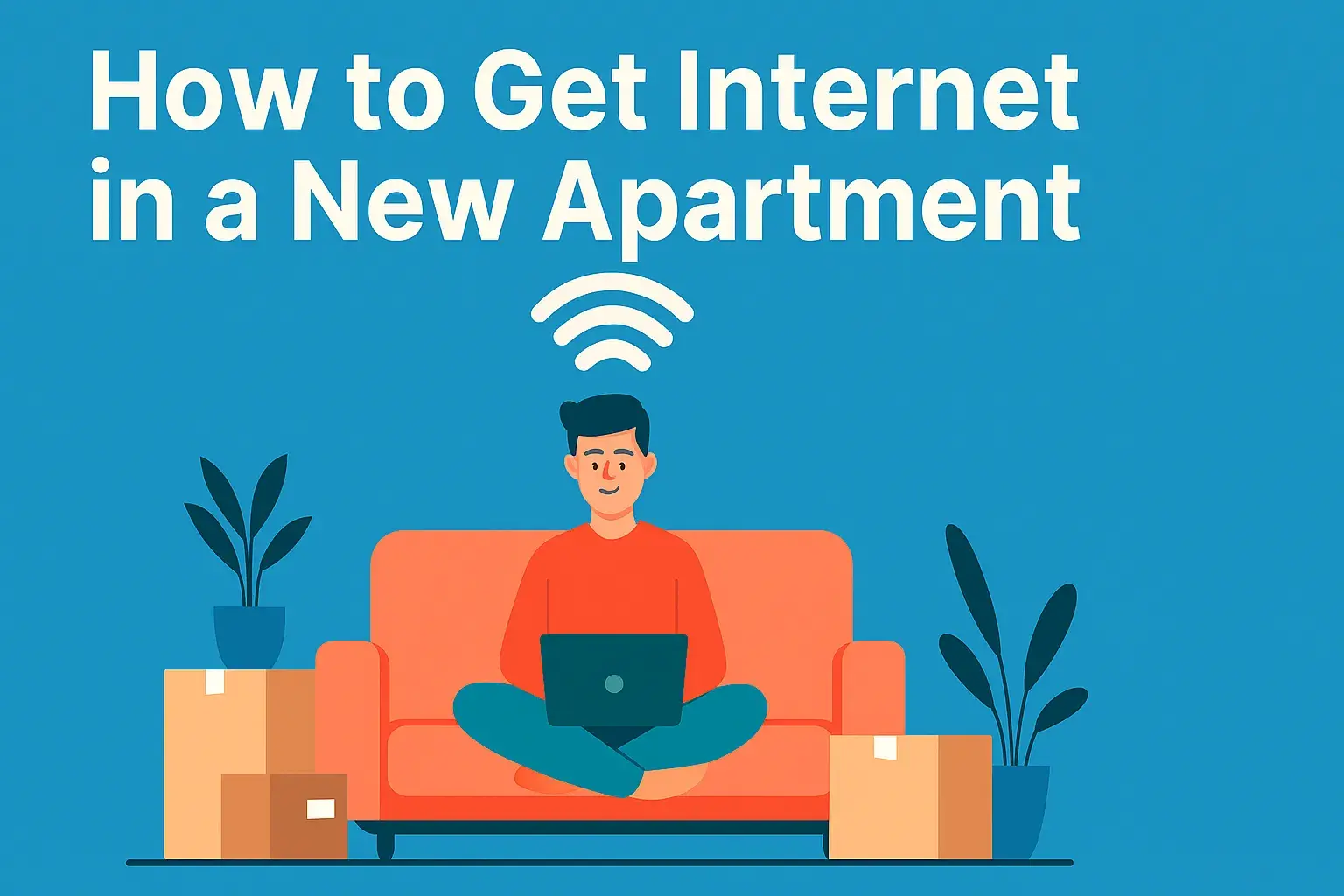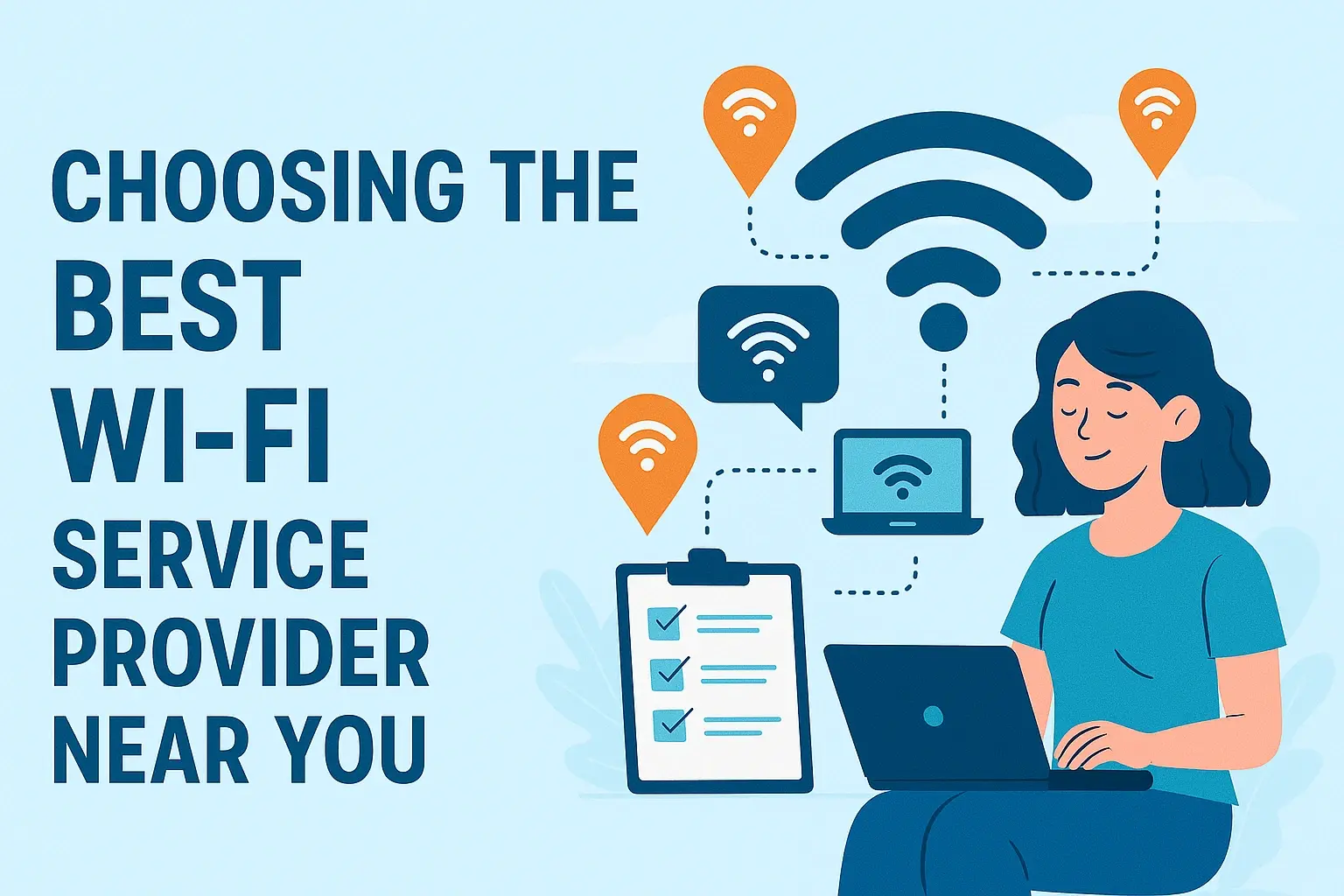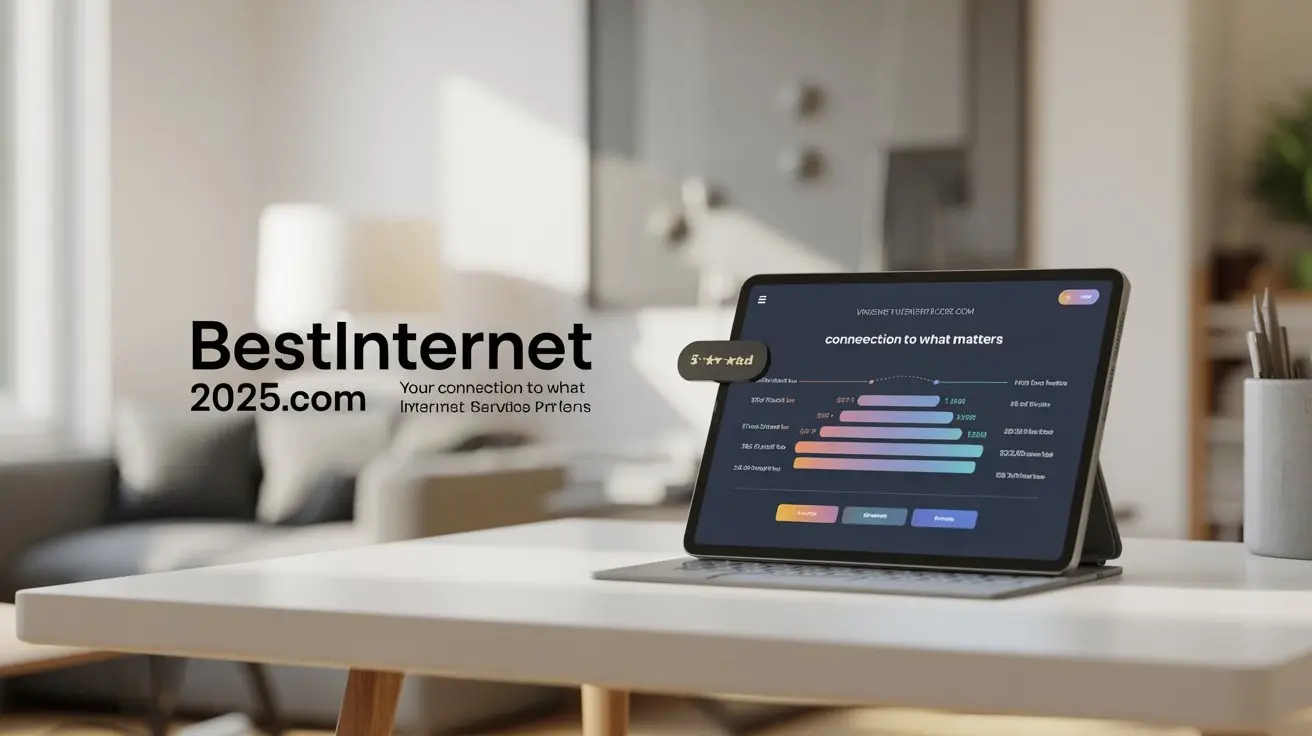Reliable Internet Solutions for Small Businesses

For small businesses, a dependable internet connection isn't a luxury; it's the backbone of operations, from customer communication to cloud-based productivity. This guide explores the most reliable internet solutions available in 2025, helping you choose a service that fuels growth, not frustration.
Understanding Your Small Business Internet Needs
In today's digitally driven economy, a robust and reliable internet connection is no longer a mere convenience for small businesses; it's a fundamental necessity. From facilitating seamless communication with clients and suppliers to powering cloud-based applications, e-commerce platforms, and remote workforces, your internet service directly impacts operational efficiency, customer satisfaction, and ultimately, your bottom line. In 2025, businesses of all sizes are increasingly reliant on uninterrupted connectivity. A slow or unstable connection can lead to lost sales, missed opportunities, decreased employee productivity, and damage to your brand's reputation. Therefore, identifying and securing "reliable internet solutions for small businesses" is a critical strategic decision. This involves understanding not just the types of connections available, but also your specific business demands. Are you a small retail shop processing online orders and managing inventory? A consultancy firm relying on video conferencing and cloud storage? Or a creative agency uploading large files and collaborating remotely? Each scenario has unique bandwidth and reliability requirements. This comprehensive guide will delve into the various reliable internet options for small businesses in 2025, helping you navigate the landscape and make an informed choice that supports your business's current needs and future growth.
Exploring Reliable Internet Connection Types for Businesses
The landscape of internet connectivity for businesses has evolved significantly, offering a spectrum of technologies designed to meet diverse needs. For small businesses, the quest for reliability often leads to a few key contenders, each with its own set of advantages and disadvantages. Understanding these technologies is the first step toward selecting the most appropriate solution. In 2025, the primary reliable options typically fall into categories based on the physical infrastructure used to deliver the internet signal. These include wired connections like fiber optic, cable, and DSL, as well as wireless alternatives such as fixed wireless, satellite, and the rapidly emerging 5G. Each technology offers different performance characteristics, availability, and cost structures. Making the right choice requires a careful assessment of your business's specific requirements, including speed, latency, uptime guarantees, and budget. This section will break down the most prevalent and reliable internet connection types, providing the foundational knowledge needed to evaluate them for your small business.
Fiber Optic Internet: The Gold Standard
Fiber optic internet is widely considered the pinnacle of internet connectivity for businesses seeking unparalleled reliability and performance. Unlike traditional copper-based technologies, fiber optics transmit data using light signals through thin strands of glass or plastic. This fundamental difference translates into significant advantages, making it the most sought-after solution for businesses that cannot afford downtime.
How Fiber Optic Internet Works
Data is converted into light pulses and sent through fiber optic cables. These cables are immune to electromagnetic interference, which can disrupt signals in copper wires. This inherent immunity contributes to a cleaner, more stable signal, crucial for consistent performance.
Advantages for Small Businesses
- Unmatched Speed: Fiber offers symmetrical upload and download speeds, meaning your outgoing data travels just as fast as your incoming data. This is critical for businesses that regularly upload large files, host video conferences, or use cloud-based services extensively. Speeds can range from 100 Mbps to 10 Gbps and beyond.
- Exceptional Reliability: Fiber optic cables are more durable and less susceptible to environmental factors like weather, temperature fluctuations, and electrical interference compared to copper. This results in significantly higher uptime and fewer service disruptions.
- Low Latency: Latency, the delay in data transmission, is extremely low with fiber. This is vital for real-time applications like VoIP (Voice over Internet Protocol), video conferencing, online gaming, and financial trading, ensuring smooth and responsive interactions.
- Scalability: As your business grows, your fiber connection can often be upgraded to accommodate increasing bandwidth demands without requiring a complete infrastructure overhaul.
- Security: Tapping into a fiber optic line without detection is significantly more difficult than with copper, offering a layer of inherent security.
Disadvantages to Consider
- Availability: While expanding rapidly, fiber optic infrastructure is not yet universally available, especially in rural or less densely populated areas. Installation can also be more complex and costly where new lines need to be laid.
- Cost: Generally, fiber optic plans tend to be more expensive than DSL or cable, although the long-term benefits in productivity and reduced downtime often justify the investment for many businesses.
2025 Statistics and Trends
By 2025, it's projected that over 70% of new business internet installations in urban and suburban areas will be fiber optic. The global fiber optic market is expected to reach over $100 billion, driven by the increasing demand for high-speed, reliable connectivity. Providers are investing heavily in expanding fiber networks, making it more accessible than ever before. For instance, a recent survey indicated that businesses with fiber optic connections reported an average of 99.9% uptime, compared to 99.5% for cable and 98.5% for DSL.
Example: A small graphic design firm in a metropolitan area relies on fiber optic internet to upload large design files to clients and collaborate on projects in real-time using cloud-based tools. Their consistent 1 Gbps symmetrical connection ensures no delays in client feedback loops and seamless remote team collaboration, directly contributing to their project delivery efficiency.
Cable Internet: A Versatile and Widely Available Option
Cable internet, delivered over the same coaxial cables used for cable television, is a popular and often cost-effective choice for many small businesses. It offers a good balance of speed and affordability, making it a viable option where fiber is not available or when budget constraints are a primary concern.
How Cable Internet Works
Cable internet uses a hybrid fiber-coaxial (HFC) network. Data travels over fiber optic lines for the majority of the distance to a local node, and then uses coaxial cables to reach individual homes and businesses. This shared network architecture means that bandwidth can be affected by the number of users in a given area.
Advantages for Small Businesses
- Widespread Availability: Cable internet is available in most urban and suburban areas, making it an accessible option for a large number of small businesses.
- Good Download Speeds: Cable typically offers strong download speeds, which are sufficient for most browsing, streaming, and general business operations. Download speeds can range from 50 Mbps to over 1 Gbps.
- Competitive Pricing: Cable plans are often more affordable than fiber, providing a cost-effective solution for businesses with moderate internet needs.
- Bundling Options: Many cable providers offer bundled packages that include internet, TV, and phone services, which can lead to further cost savings.
Disadvantages to Consider
- Asymmetrical Speeds: Upload speeds on cable internet are generally much slower than download speeds. This can be a limitation for businesses that frequently upload large files or rely heavily on cloud backups and video conferencing.
- Shared Bandwidth: Because the network is shared with other users in the neighborhood, speeds can fluctuate during peak usage times. This can lead to inconsistent performance, especially during busy business hours.
- Potential for Interference: While generally reliable, cable can be more susceptible to interference and signal degradation than fiber.
2025 Statistics and Trends
Cable internet continues to be a dominant force, with over 85% of small businesses having access to cable broadband. While fiber is gaining market share, cable providers are also upgrading their networks to offer higher speeds and better performance. In 2025, many cable providers are rolling out DOCSIS 4.0 technology, which promises symmetrical speeds and improved capacity, narrowing the gap with fiber in some areas. A recent industry report indicated that cable internet accounts for approximately 40% of the small business internet market share.
Example: A local bakery uses cable internet for its point-of-sale system, online ordering platform, and social media marketing. While their upload speeds are moderate, their download speeds are sufficient for their needs, and the competitive pricing fits their budget. They experience occasional slowdowns during peak evening hours, but for their core business operations, it remains reliable enough.
DSL Internet: A Budget-Friendly Choice with Caveats
Digital Subscriber Line (DSL) internet utilizes existing telephone lines to transmit data. It's often the most budget-friendly option and can be a suitable choice for businesses with very basic internet needs and limited budgets, particularly in areas where other high-speed options are unavailable.
How DSL Internet Works
DSL operates by using different frequencies on a copper telephone line than those used for voice calls. This allows for simultaneous internet and phone service on the same line. The speed and reliability of DSL are heavily dependent on the distance from the provider's central office.
Advantages for Small Businesses
- Affordability: DSL is typically the least expensive internet option, making it attractive for startups or businesses with tight budgets.
- Availability: DSL is available anywhere there is a traditional phone line, which covers a vast majority of locations, including many rural areas.
- Dedicated Line (for some types): Some forms of DSL, like dedicated DSL, offer a more stable connection compared to shared cable networks, though this is less common for standard business plans.
Disadvantages to Consider
- Slow Speeds: DSL speeds are generally the slowest among broadband options, with download speeds often ranging from 5 Mbps to 100 Mbps, and upload speeds being significantly lower.
- Distance Sensitivity: Performance degrades significantly the further you are from the provider's central office. This means businesses located far from the exchange may experience very slow speeds.
- Asymmetrical Speeds: Like cable, DSL is asymmetrical, with upload speeds being a fraction of download speeds.
- Potential for Interference: DSL can be susceptible to interference from other electronic devices and can be affected by the quality of the copper phone lines.
2025 Statistics and Trends
DSL's market share for business internet is declining as faster technologies become more prevalent. However, it still serves a niche market, particularly in rural areas or for very small businesses with minimal internet requirements. In 2025, DSL is estimated to represent less than 10% of the small business internet market, primarily serving as a fallback option. Providers are slowly phasing out DSL in favor of fiber and cable upgrades.
Example: A sole proprietor operating a small consulting business from home uses DSL for basic email communication and occasional web browsing. Their internet usage is minimal, and the low cost of DSL is their primary deciding factor. They acknowledge the slow speeds but find it adequate for their limited needs.
Fixed Wireless Internet: Bridging the Rural Divide
Fixed wireless internet provides a broadband connection without the need for physical cables running directly to the business premises. Instead, it uses radio waves to transmit data between a fixed antenna on the business's building and a provider's tower. This technology is particularly valuable for businesses in rural or hard-to-reach areas where traditional wired infrastructure is limited or non-existent.
How Fixed Wireless Internet Works
A small antenna is installed on the exterior of the business's building, which communicates wirelessly with a nearby tower operated by the internet service provider. This tower is typically connected to the broader internet backbone via fiber optic cable.
Advantages for Small Businesses
- Availability in Underserved Areas: Fixed wireless is an excellent solution for rural businesses that lack access to fiber, cable, or even reliable DSL.
- Faster Deployment: Installation can often be quicker than trenching for new cable or fiber lines, making it a good option for businesses needing internet quickly.
- Competitive Speeds: Modern fixed wireless can offer speeds comparable to cable internet, with some providers offering speeds up to 100 Mbps or more.
- Cost-Effective Alternative: It can be a more affordable option than satellite internet for businesses in areas with fixed wireless coverage.
Disadvantages to Consider
- Line of Sight Requirement: A clear, unobstructed line of sight between the business's antenna and the provider's tower is essential for optimal performance. Trees, buildings, or other obstructions can degrade or block the signal.
- Weather Sensitivity: Heavy rain, snow, or fog can sometimes interfere with the wireless signal, leading to temporary performance issues.
- Shared Bandwidth: Similar to cable, fixed wireless networks can be shared, meaning speeds might fluctuate during peak usage times, though providers often manage this more effectively than cable.
- Speed Limitations: While improving, the absolute highest speeds achievable with fixed wireless may not match those offered by fiber optic connections.
2025 Statistics and Trends
Fixed wireless is experiencing significant growth, particularly in rural broadband initiatives. In 2025, it's estimated that fixed wireless will serve over 15% of small businesses in areas where wired options are limited. Advancements in spectrum utilization and antenna technology are pushing speeds higher, making it a more compelling alternative. Government initiatives aimed at closing the digital divide are also driving investment in fixed wireless infrastructure.
Example: A small agricultural supply business located in a rural county uses fixed wireless internet. Fiber and cable are not available in their area. The fixed wireless connection provides them with sufficient bandwidth for their inventory management software, online orders, and communication with suppliers, enabling them to operate efficiently despite their remote location.
Satellite Internet: A Solution for Remote Locations
Satellite internet is the most widely available option for businesses located in extremely remote areas where no other broadband infrastructure exists. It works by transmitting data to and from a satellite orbiting Earth via a satellite dish installed at the business location.
How Satellite Internet Works
A satellite dish on your business premises communicates with a geostationary satellite (or a constellation of low-earth orbit satellites, like Starlink). This satellite then relays the data to and from a ground station connected to the internet backbone.
Advantages for Small Businesses
- Global Availability: Satellite internet is available virtually anywhere with a clear view of the sky, making it the only option for some of the most remote businesses.
- Independence from Terrestrial Infrastructure: It does not rely on local phone lines or cable networks, making it resilient to ground-based infrastructure damage.
- Increasing Speeds: Newer satellite technologies, particularly those using low-earth orbit (LEO) constellations, are offering significantly faster speeds and lower latency than traditional geostationary satellites.
Disadvantages to Consider
- High Latency: Traditional geostationary satellite internet suffers from very high latency due to the vast distance the signal must travel. This makes real-time applications like VoIP and video conferencing challenging. LEO satellites are improving this significantly.
- Speed Limitations: While improving, speeds can still be lower than other broadband options, and data caps are common.
- Weather Sensitivity: Heavy precipitation can significantly degrade or interrupt satellite signals.
- Cost: Satellite plans can be expensive, and equipment costs can be substantial.
- Data Caps: Many satellite plans come with strict data caps, which can be problematic for businesses with moderate to heavy internet usage.
2025 Statistics and Trends
While traditional satellite internet is being overshadowed by LEO constellations, it still serves a critical role for extremely remote businesses. LEO satellite services like Starlink are rapidly expanding their business offerings, promising speeds and latency that rival terrestrial broadband in many areas. In 2025, LEO satellite services are projected to capture a growing segment of the remote business market, estimated at around 5% of small businesses nationwide, primarily those in truly underserved regions.
Example: A remote research outpost or a small eco-tourism lodge situated in a national park with no terrestrial infrastructure might rely on satellite internet. For essential communications and basic data transfer, it's their only viable option. They often have to manage data usage carefully due to caps.
5G Business Internet: The Future is Now
5G, the fifth generation of cellular network technology, is rapidly evolving beyond mobile devices to offer robust fixed wireless internet solutions for businesses. Leveraging higher frequencies and advanced antenna technologies, 5G promises high speeds, low latency, and increased capacity, making it a compelling alternative to traditional wired connections for many small businesses.
How 5G Business Internet Works
5G fixed wireless internet uses cellular towers to transmit data wirelessly to a 5G receiver or modem installed at the business location. It utilizes a broader range of spectrum frequencies than previous cellular generations, enabling much higher data throughput and lower latency.
Advantages for Small Businesses
- High Speeds: 5G can deliver speeds comparable to or even exceeding many cable and fiber plans, with the potential for gigabit speeds.
- Low Latency: 5G significantly reduces latency, making it suitable for real-time applications, cloud computing, and potentially even IoT (Internet of Things) devices.
- Flexibility and Mobility: It offers a more flexible deployment option than wired services, as it doesn't require physical cabling to the premises. This is ideal for businesses that may relocate or require temporary high-speed connections.
- Rapid Deployment: Installation can be much faster than traditional wired installations.
- Potential for Symmetrical Speeds: While not always the case, some 5G plans are beginning to offer more symmetrical upload and download speeds.
Disadvantages to Consider
- Availability: 5G coverage, especially for fixed wireless business solutions, is still expanding. Availability can vary significantly by location, and the highest-performing 5G services often rely on millimeter-wave (mmWave) spectrum, which has a shorter range and is more susceptible to obstructions.
- Capacity and Congestion: Like any wireless technology, 5G networks can experience congestion in densely populated areas, potentially impacting speeds and reliability.
- Equipment Requirements: Businesses may need specific 5G modems or receivers, and the installation process might require professional setup.
- Data Caps: Some 5G plans may still include data caps, though unlimited plans are becoming more common.
2025 Statistics and Trends
5G fixed wireless is one of the fastest-growing segments of the business internet market in 2025. It's projected to serve nearly 20% of small businesses, particularly those in suburban and urban areas where fiber is not yet deployed or where flexibility is paramount. Major carriers are actively marketing 5G business solutions, and ongoing network upgrades are continuously improving coverage and performance. Early adoption data shows businesses leveraging 5G for improved video conferencing, faster cloud access, and enhanced mobile workforce support.
Example: A growing tech startup that anticipates frequent office moves or needs rapid deployment of new locations is considering 5G fixed wireless. The high speeds, low latency, and flexibility of 5G allow them to quickly set up new offices and ensure their team has reliable, fast internet for their development and collaboration tools.
Key Factors When Choosing a Reliable Business Internet Provider
Selecting the right internet provider for your small business is a decision that impacts daily operations, productivity, and long-term growth. It's not just about picking the cheapest or fastest plan; it's about finding a solution that offers sustained reliability, meets your specific operational needs, and provides adequate support. In 2025, with an ever-increasing reliance on digital tools and cloud services, a stable internet connection is paramount. Several critical factors should guide your decision-making process. These include understanding your actual bandwidth requirements, the importance of uptime guarantees, the quality of customer support, and the total cost of ownership. Furthermore, considering the provider's reputation, their Service Level Agreements (SLAs), and future-proofing your connection are essential steps. This section will break down these key considerations to help you make an informed choice that ensures your business stays connected and competitive.
Evaluating Internet Providers: What to Look For
When you're evaluating potential internet providers for your small business, it's crucial to look beyond advertised speeds and headline prices. A truly reliable provider offers a comprehensive package of services and support. In 2025, this means scrutinizing their network infrastructure, their commitment to uptime, and their responsiveness to issues. Many providers offer business-specific plans that differ from residential services, often including features like static IP addresses, enhanced support, and more robust Service Level Agreements (SLAs). It's also wise to research the provider's reputation within your local business community. Online reviews, testimonials, and asking other local businesses about their experiences can provide invaluable insights. Understanding the provider's network architecture – whether it's fiber, cable, or wireless – can also give you a clue about potential performance characteristics and reliability. For instance, a provider heavily invested in fiber optic infrastructure is likely to offer more consistent and higher speeds than one relying solely on older copper lines.
Provider Reputation and Reviews
Before committing, thoroughly research provider reviews. Look for consistent complaints about downtime, slow speeds, or poor customer service. Conversely, providers with a track record of positive feedback regarding reliability and support are generally safer bets. Websites like the Better Business Bureau (BBB), Trustpilot, and industry-specific forums can be excellent resources.
Network Infrastructure and Technology
Understand the underlying technology the provider uses. As discussed earlier, fiber optic offers the highest reliability and speed. Cable is a good middle ground. Fixed wireless and 5G are strong contenders, especially in areas with limited wired options. DSL is generally the least reliable for business needs. Prioritize providers with modern, well-maintained infrastructure.
Business-Specific Plans and Features
Ensure the provider offers plans tailored for businesses. These often include:
- Static IP Addresses: Essential for hosting servers, VPNs, and certain business applications.
- Symmetrical Speeds: Crucial for businesses that upload as much data as they download.
- Priority Support: Business customers often receive faster and more knowledgeable technical support.
- Service Level Agreements (SLAs): Formal guarantees of uptime and performance.
Local vs. National Providers
While national providers offer broad coverage, local or regional providers may offer more personalized service and faster on-site support, especially for specialized business needs. It's worth investigating both.
Understanding Speed and Bandwidth Requirements
Determining the right internet speed and bandwidth for your small business is a critical step in ensuring reliability and efficiency. In 2025, with the proliferation of cloud services, video conferencing, and digital collaboration tools, simply having "internet" is no longer enough; it needs to be *sufficient* internet. Insufficient bandwidth can lead to slow loading times, dropped calls, and frustrated employees and customers. Conversely, over-provisioning can lead to unnecessary expenses. The key is to accurately assess your business's current and future internet usage patterns.
Assessing Your Needs
Consider the following factors:
- Number of Users: How many employees will be using the internet simultaneously?
- Types of Applications: Are you primarily using email and web browsing, or are you heavily reliant on video conferencing, large file transfers, cloud-based CRM, VoIP, or streaming services?
- Device Usage: How many devices (computers, tablets, smartphones, IoT devices) will be connected?
- Peak Usage Times: When is your internet usage highest?
- Future Growth: How do you anticipate your internet needs evolving over the next 1-3 years?
Download vs. Upload Speeds
Most residential internet plans prioritize download speeds, which are important for browsing and streaming. However, for businesses, upload speeds are equally, if not more, critical. Businesses that:
- Conduct frequent video conferences
- Upload large files (e.g., design, video, software development)
- Use cloud backup services
- Host their own servers or applications
- Utilize VoIP extensively
will benefit significantly from symmetrical or near-symmetrical upload and download speeds, typically found in fiber optic plans.
Bandwidth Calculation Example
A simple calculation can help estimate needs. For instance:
- Basic web browsing/email: 5-10 Mbps per user
- Video conferencing (HD): 10-25 Mbps per user (download and upload)
- Large file uploads (e.g., 1GB file): Can take minutes to hours depending on upload speed. If a 1GB file needs to be uploaded in 5 minutes, you'd need an upload speed of at least 26.7 Mbps (1GB = 8000 Megabits; 8000 Mb / 300 seconds = ~26.7 Mbps).
Summing these for your expected number of users and applications will give you a baseline requirement. It's often advisable to add a buffer of 20-30% for unexpected usage spikes and future growth.
2025 Speed Trends
In 2025, the average business internet speed demand continues to rise. A recent study indicated that the average small business now requires at least 100 Mbps download and 50 Mbps upload, with many in the tech and creative sectors demanding gigabit speeds. Providers are increasingly offering tiered business plans that allow for scaling as needs change.
The Importance of Service Level Agreements (SLAs)
For small businesses, a Service Level Agreement (SLA) is not just a legal document; it's a critical guarantee of service quality and reliability. In 2025, where business continuity is paramount, understanding and negotiating a robust SLA with your internet provider is essential. An SLA outlines the performance standards the provider commits to meet, including uptime guarantees, maximum latency, and response times for technical support and repairs. Without an SLA, you have little recourse if your internet service fails, potentially leading to significant financial losses due to downtime.
Key Components of a Business SLA
- Uptime Guarantee: This is perhaps the most crucial aspect. It specifies the percentage of time the service is guaranteed to be operational. For example, a 99.9% uptime guarantee means the service can be down for approximately 8.76 hours per year. A 99.99% guarantee reduces this to about 52.6 minutes per year. For critical business operations, higher uptime percentages are essential.
- Performance Guarantees: This can include guaranteed minimum speeds (both download and upload) and maximum latency.
- Response and Resolution Times: The SLA should define how quickly the provider will respond to an outage or service issue and how quickly they aim to resolve it.
- Service Credits: This outlines the compensation you will receive (usually in the form of a bill credit) if the provider fails to meet the SLA terms. The amount and conditions for these credits are vital.
- Maintenance Windows: Scheduled maintenance is often excluded from uptime guarantees, but the SLA should specify when these can occur and how much notice will be given.
Why SLAs Matter for Reliability
An SLA provides accountability. It forces providers to invest in their network infrastructure and support systems to meet their commitments. For your business, it offers peace of mind and a financial safety net in case of service failures. Always read the SLA carefully and ensure it aligns with your business's tolerance for downtime.
2025 SLA Trends
In 2025, providers are increasingly offering more granular and customer-centric SLAs for business clients. There's a growing trend towards offering guaranteed response times for critical issues within a few hours, and for higher-tier plans, even guaranteed resolution within a specific timeframe. Service credits are also becoming more substantial, reflecting the increased cost of business downtime.
Customer Support and Uptime Guarantees
Beyond the technical specifications of the internet connection, the quality of customer support and the provider's commitment to uptime are paramount for small business reliability. In 2025, when businesses operate 24/7 or have extended hours, even short periods of downtime can be costly. A responsive and knowledgeable support team can significantly mitigate the impact of any issues that do arise.
Evaluating Customer Support
- Availability: Is support available 24/7? What channels are offered (phone, chat, email)?
- Expertise: Are the support staff trained to handle business-specific technical issues, or are they generalists?
- Response Times: How quickly can you expect a human to answer your call or respond to your ticket?
- On-Site Support: For critical issues, does the provider offer timely on-site technician visits?
Uptime Guarantees and Monitoring
As discussed with SLAs, uptime is critical. Look for providers that:
- Offer high uptime guarantees (99.9% or higher).
- Proactively monitor their network for potential issues.
- Provide transparent reporting on network status.
- Have a proven track record of meeting their uptime commitments.
A provider that invests in redundant systems and network maintenance is more likely to offer consistent uptime.
2025 Support and Reliability Landscape
The demand for 24/7 business support is standard in 2025. Many providers are leveraging AI-powered chatbots for initial support and faster issue triage, but the availability of human experts for complex problems remains a key differentiator. Uptime statistics for leading business internet providers consistently show fiber-based services achieving 99.95% to 99.99% uptime, while cable and fixed wireless typically range from 99.5% to 99.9%. For businesses where even minutes of downtime are unacceptable, a provider with a strong SLA and a history of excellent uptime is the best choice.
Cost and Budgeting for Business Internet
The cost of business internet is a significant factor for any small business, but it's crucial to balance budget considerations with the need for reliability and performance. In 2025, the adage "you get what you pay for" holds particularly true for internet services. While it's tempting to opt for the cheapest plan, this can often lead to hidden costs down the line due to poor performance, frequent outages, and lost productivity. A strategic approach to budgeting involves understanding the total cost of ownership, not just the monthly service fee.
Understanding Pricing Structures
- Monthly Service Fees: The recurring cost for the internet plan.
- Equipment Costs: Fees for modems, routers, or other necessary hardware. Some providers include this, while others charge a monthly rental or require a purchase.
- Installation Fees: One-time charges for setting up the service.
- Contract Terms: Many business plans require a 1-3 year contract. Early termination fees can be substantial.
- Hidden Fees: Be aware of potential surcharges, regulatory fees, or data overage charges.
Comparing Total Cost of Ownership
When comparing providers, calculate the total cost over the contract term. Consider not only the monthly fee but also installation, equipment, and potential early termination fees. For example, a slightly more expensive fiber plan with no installation fees and a longer contract might be cheaper overall than a cheaper cable plan with high setup costs and a shorter, more expensive contract.
Value vs. Price
Focus on the value your internet service provides. A reliable, high-speed connection can boost productivity, enable new revenue streams (like e-commerce), and improve customer satisfaction. The cost of downtime for a small business can far exceed the savings from a cheaper, less reliable internet plan. In 2025, businesses are increasingly viewing internet as a critical infrastructure investment rather than a utility expense.
2025 Cost Trends
While prices for high-speed internet are generally stable, the cost per Mbps continues to decrease due to technological advancements and increased competition. However, business-grade services with guaranteed uptime and SLAs are typically priced higher than residential plans. Expect to pay anywhere from $70-$100+ per month for reliable business internet, with fiber optic and gigabit speeds often costing $150-$300+ per month, depending on the provider and location.
Security Considerations for Business Internet
In 2025, the security of your business's internet connection is as critical as its reliability. A compromised connection can lead to data breaches, financial fraud, reputational damage, and legal liabilities. While your internet service provider (ISP) plays a role in network security, ultimately, the responsibility for securing your business's data and systems lies with you. Understanding the security features offered by your ISP and implementing your own robust security measures is essential.
ISP Security Features
- Network Security: Reputable ISPs invest in protecting their infrastructure from external threats.
- Firewalls: Many business plans include basic firewall protection.
- Malware and Spam Filtering: Some providers offer optional services to filter out malicious content.
- Secure Connections: Ensuring your connection uses up-to-date encryption protocols.
Essential Business Security Practices
- Robust Firewalls: Implement a business-grade firewall at the network perimeter.
- Strong Passwords and Multi-Factor Authentication (MFA): Enforce strong password policies for all devices and accounts, and enable MFA wherever possible.
- Regular Software Updates: Keep all operating systems, applications, and firmware updated to patch vulnerabilities.
- Antivirus and Anti-Malware Software: Install and maintain up-to-date security software on all devices.
- Employee Training: Educate your staff about phishing scams, social engineering, and safe internet practices.
- VPNs: Use Virtual Private Networks (VPNs) for remote access and to secure data transmission, especially when using public Wi-Fi.
- Data Encryption: Encrypt sensitive data both in transit and at rest.
- Regular Backups: Maintain regular, secure backups of your critical data.
2025 Security Landscape
The threat landscape in 2025 is more sophisticated than ever, with ransomware, phishing, and supply chain attacks being major concerns. Businesses are increasingly adopting Zero Trust security models and investing in advanced cybersecurity solutions. When choosing an ISP, inquire about their security protocols and whether they offer any security add-on services. However, always assume that your primary security relies on your internal IT infrastructure and practices.
Future-Proofing Your Small Business Internet Connection
Choosing a reliable internet solution for your small business in 2025 is not just about meeting today's needs; it's about investing in a connection that can support your business's growth and evolving technological landscape for years to come. Future-proofing your internet connection means selecting a service that offers scalability, robust performance, and adaptability to emerging technologies. As businesses become more reliant on cloud computing, AI-driven tools, and an ever-increasing number of connected devices, the demands on internet infrastructure will only continue to grow. Making a forward-thinking decision now can save you significant time, money, and disruption down the line. This involves looking beyond immediate speed requirements and considering the long-term viability and potential of the technology and provider you choose.
Scalability of Services
When selecting an internet plan, inquire about the ease and cost of upgrading your bandwidth. Fiber optic connections are inherently scalable, often allowing for significant speed increases without new physical installations. Providers that offer tiered business plans with clear upgrade paths are ideal. Consider your projected growth over the next 3-5 years and choose a service that can accommodate it. A plan that is "fast enough" today might be inadequate in 18 months if your business expands its digital operations.
Emerging Technologies and Standards
Keep an eye on advancements like Wi-Fi 7, the continued rollout of 5G, and the increasing adoption of edge computing. Your internet connection should be robust enough to support these future technologies. For example, a high-speed fiber connection will be essential to leverage the full capabilities of Wi-Fi 7 within your office. Similarly, the low latency of fiber and advanced 5G networks will be critical for real-time data processing at the edge.
Provider's Investment in Infrastructure
Research your potential provider's commitment to ongoing network investment and upgrades. A provider that is actively expanding its fiber network or investing in 5G infrastructure is more likely to offer a future-proof solution than one that relies on aging copper lines. Look for providers with a clear roadmap for technological development and service enhancement.
Redundancy and Backup Options
For businesses where downtime is catastrophic, consider implementing a redundant internet connection. This could involve having a secondary connection from a different provider or using a different technology (e.g., a primary fiber connection with a 5G or fixed wireless backup). This ensures that if your primary connection fails, your business can seamlessly switch to the backup, minimizing disruption. Many businesses in 2025 are adopting a multi-provider strategy for critical connectivity.
2025 Future-Proofing Strategies
The trend in 2025 is towards higher bandwidth, lower latency, and increased flexibility. Businesses are moving away from static, single-provider solutions towards more dynamic, resilient, and scalable connectivity strategies. Investing in fiber optic is the most common approach to future-proofing, but advanced 5G fixed wireless and even LEO satellite services are becoming viable options for specific use cases. The key is to choose a provider and technology that can grow with your business and adapt to the accelerating pace of digital transformation.
Example: A small e-commerce business anticipates a significant increase in online traffic and order volume over the next two years. They choose a 1 Gbps symmetrical fiber optic plan from a reputable provider known for its network expansion. This provides them with ample bandwidth for their current needs and the ability to easily upgrade to 10 Gbps if required, ensuring their online store remains fast and responsive as their business scales.
In conclusion, selecting reliable internet solutions for small businesses in 2025 requires a strategic approach that balances immediate needs with future growth. Fiber optic internet stands out as the most robust and future-proof option, offering unparalleled speed, reliability, and low latency. However, cable, advanced 5G fixed wireless, and even fixed wireless in underserved areas present viable alternatives, each with its own set of advantages and considerations. When evaluating providers, prioritize those with strong Service Level Agreements (SLAs), excellent customer support, and a clear commitment to network reliability. Accurately assessing your business's bandwidth requirements, understanding the importance of symmetrical upload/download speeds, and considering security measures are crucial steps. By investing in the right internet infrastructure today, your small business can ensure seamless operations, enhanced productivity, and a competitive edge in the dynamic digital landscape of tomorrow. Don't let unreliable internet hold you back; make an informed choice that empowers your business to thrive.
